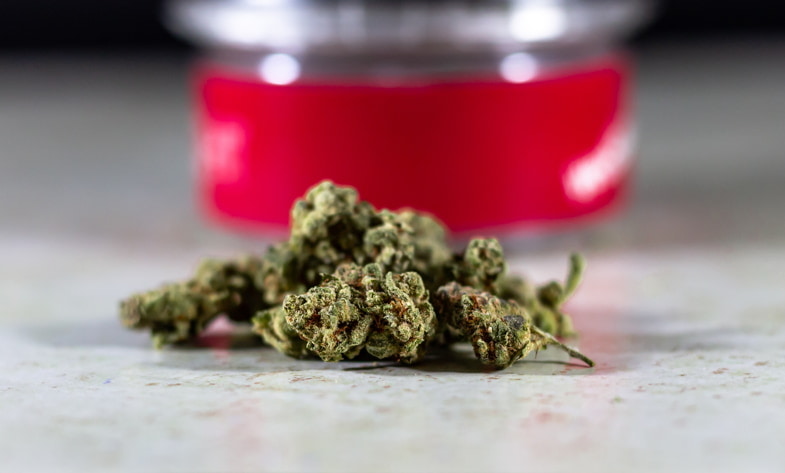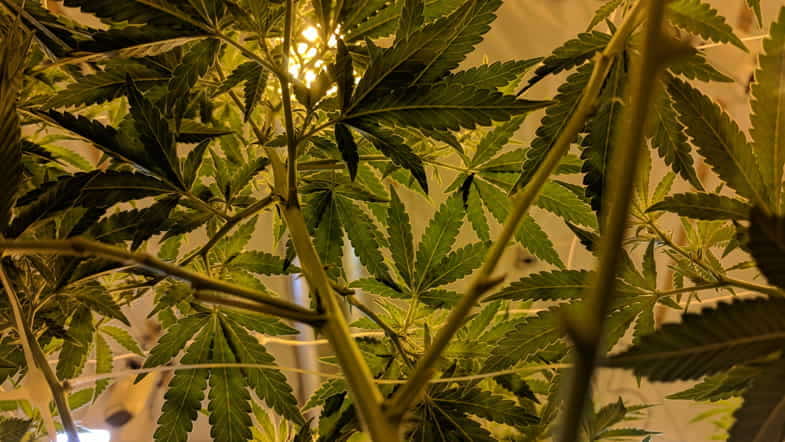Published on: 19/12/2022
Do not lower the quality of the final product, but reduce the crop yield. That is why farmers (in countries where cultivation is not banned) want to have as little of it as possible.
The presence of too many popcorn buds in a cannabis plant could be a warning sign as to its health. If proper precautions are not taken, the yield of the crop may be compromised.
Let’s take a look at the factors that most influence their formation and what remedies can be taken to prevent popcorn bud growth.
Read also: Why cannabis could be a valuable aid in saving bees
Popcorn buds: what they are and how to use them
Popcorn buds are underdeveloped cannabis inflorescences. We are therefore talking about buds that are not very compact and small in size, which have not completed their development and are therefore less dense and valuable than the mature buds (best quality buds).
Only the appearance (and weight) differentiates popcorn buds, which grow in the lower part of the plant, from best quality buds, which develop in the higher branches.
The negative connotation attributed to popcorn buds by marijuana growers would therefore not derive from the quality of the product, but from the poor overall yield of the crop.
In countries where it is not forbidden to grow marijuana, these buds are mainly used in the production of edibles, where the appearance of cannabis does not matter. Clearly, more popcorn buds have to be used in order to obtain the same amount of active ingredient as classic marijuana buds.
Moreover, since the quality of the product remains the same (they are simply the smallest buds of the plant), popcorn buds are used by cannabis users (where it is legal) for vaping, due to their consistency, which is less dense than that of normal buds.


Popcorn buds: what are the causes?
Generally, small and not very compact buds are the result of some form of stress suffered by the plant, e.g. inadequate care. Most common stress factors are:
👉excessive heat: when a cannabis plant experiences heat stress, there is a reduction in crop yield. In fact, the plant reacts to heat by producing buds that are not very dense in order to prevent the transmission of mould and other pathogens.
Therefore, if you want to prevent the growth of popcorn buds, you have to keep the temperatures below 25-30°C. Clearly, it is more difficult to control temperatures when growing outdoors, which is why popcorn buds develop more frequently in outdoor plantations.
👉Poor spacing between plants: when there are too many plants in a small space, yields also decrease. In order to prevent the growth of plants with too small tops, therefore, overcrowding must be avoided so that each individual plant has the soil and, above all, the light it needs for healthy development.
👉Lack of pruning: excessively lush and bulky vegetative growth may also deprive the plants of the necessary light due to excessive shading. Defoliation is equally important, because removing leaves from lower branches means directing nutrients to the buds growing on those branches.
👉Nutrient deficiency or excess: too little or too much irrigation/fertilisation can adversely affect the plant’s ability to develop top-quality buds (i.e. larger, more compact buds).
Read also: Cannabis for older people: can it really be good for their health?
How to prevent popcorn buds?
Although popcorn buds do not compromise crop quality, there are certain steps that should be taken to prevent them from developing or at least to significantly limit their growth.
Let us therefore look at some pruning techniques that can help reduce the number of popcorn buds:
- lollipopping: it involves removing the branches of the lower part of the plant just before flowering takes place. In this way, the bottom of the stem is left uncovered, and the buds strengthen at the top so that they can absorb all nutrients, including light. At the time of cutting, the plant will take on that classic ‘lollipop’ shape that gives this practice its name.
- main lining: another pruning technique that can affect the crop yield. In this case, the main stem is modified to take the shape of a ‘Y’. The result of this operation is similar to that achieved by the technique described above: large, heavy buds at the top and no branching at the bottom of the plant.
- Screen of green (SCROG): This cultivation technique uses a net to direct the growth of the plant in order to make the most of the growing space and maximize exposure to light. Again, branches growing under the net are pruned or removed to help the plant concentrate its energy on the buds above the net, thus improving the quantity and quality of the harvest.


In conclusion
In countries where cannabis cultivation is permitted, popcorn buds pose a problem for growers, as they reduce crop yields.
We have looked at the factors that encourage their formation (excessive heat, overcrowding or overloading and nutrient deficiency or excess), and then identified the most effective remedies to counteract their development and help growers achieve higher yields.
Among the most common remedies are pruning techniques and cultivation methods with curious names, such as lollipopping, main-lining or screen of green.
If you are a fan of the topic, take a look at our best collectible products.
And keep following our blog Sensory Seeds.
See you soon.









